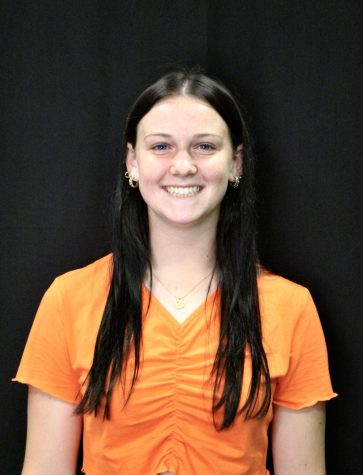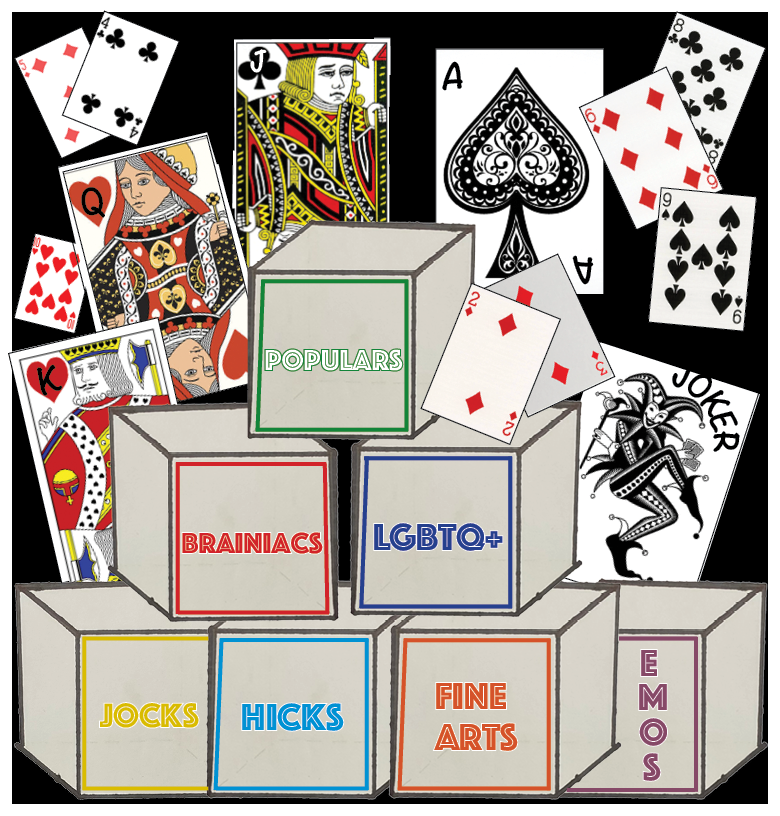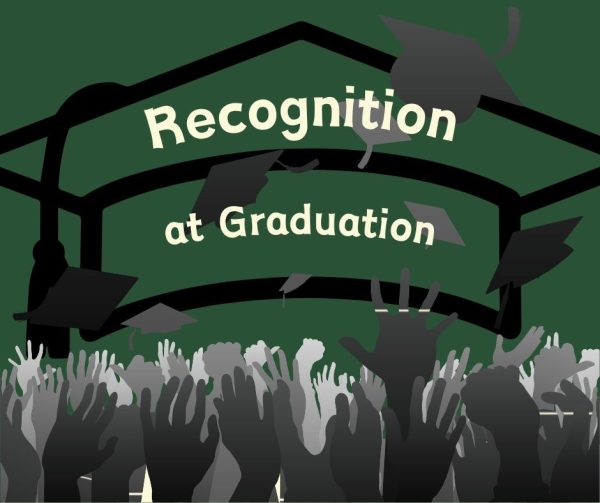High School Hierarchy
Social Standing Issues– Cliques, Popularity, the “Untouchables” and More –Still Exist
Photo Credits: iStock, VectorStock, Adobe Stock, Pixabay and Vecteezy
High school is like a deck of cards. You have the kings and queens, the jacks and the jokers, the aces and then every other card in the rest of the deck. There are many movies that stereotype each of these “cards” in a high school setting, but is that really how people are continuing to be seen? GHS is not congruous to the movies in the social standings area, but there are “untouchable” topics in which no one talks about regarding popularity, cliques and what is socially acceptable.
There is an obvious social pyramid that makes up any high school. Seniors are the kings and queens who trump over everyone. Juniors are the jacks, meaning they are almost the head but not quite there. Sophomores are the aces because they are not upperclassmen yet, but they are not babies anymore either. Finally, the freshmen are your every other card in the deck, and must know their place. The one card that never gets checked are the jokers; the people that float. The wildcards that do not really have a place anywhere. Inside each of these massive tiers, smaller categories such as jocks, populars, fine arts, brainiacs, emos, hicks and the LGBTQ+, to name a few that roam the hallways. According to Rachel Gordon, the head researcher of “How today’s high school cliques compare to yesterday’s” study at the University of Illinois at Chicago remarks, “Adolescent peer crowds play an important role in determining short-term and long-term life trajectories on social, educational and psychological fronts.” Placement in high school becomes an important factor in a teen’s future development.
“There probably is a hierarchy among the student population,” counselor Dr. Melissa Hansen said. “Just based on their perception of where they fit in each group and how each group kind of presents itself in terms of values, perspectives and beliefs. Cliques have been around forever. It’s just a way of grouping people based on like characteristics.”
Despite the hierarchy that encompasses teens, cliques are very much present as well. Not only throughout the whole school, but each grade too. According to a study about cliques in high schools presented by Stanford researchers, “Sociologists have identified seemingly universal instincts that spur this kind of sorting. These include the desires for familiarity and certainty, for control and dominance, and for security and support.” This could cause classmates to only communicate with the peers that they are more accustomed to, instead of branching out and interacting with others in their grade.
“High school movies in the early 2000s really show the groups being super different and not interacting a whole bunch,” senior Riley Egenberger said. “I think groups nowadays still interact with each other, but they just prefer to hang out with their friends and the activities that they’re involved in.”
Although students in GHS are known to mix groups, cliques are still very much alive. According to TeenHealth, “cliques are tight groups that usually have a strict code of membership and ways to act.” This is not always a way to be malicious to a peer, but more of a way to make sure they, and their group, stay on top.
“The super macho, masculine boys are at the top of the social pyramid and the stereotypical super feminine girls are at the top because they both play into what society wants them to be at their core,” senior Gabrielle Ochsner said. “That’s why boys who do theater and arts tend to get ostracized for it just because it’s not something you want your stereotypical man to do.”
Ocshner participates in almost everything that has to do with the theater programs –show choir, one act, musical– she has seen first hand what it is like for a male, particularly in the theater, to not be treated as say a male on the football team is.
“From last year in particular, the boys who were really popular and, like, the top guys in the choir circle were getting pushed in the hallways,” Ochsner said. “They were getting called gay, and getting called slurs in the bathrooms just because they took part in this activity.”
Even though activities are fairly divided during each season, GHS has changed the way many students’ view high school through the movies. Another perspective announced itself from a fine arts kid, but this one was more positive.
“Every group thinks they’re better than another group,” senior Caleb Jones said. “It’s just pride in what you do, and I feel like the more into it you are, the more pride you feel. At least in Gretna, there’s a lot of opportunities for a blend of different groups and different activities. In One Act, all those football boys constantly try out. It’s stuff like that that I feel, like, makes Gretna more united as a culture, but it’s still not perfect. No school will be perfect.”
Perhaps Jones was a “lucky one” and got to live a semi-perfect high school experience, for he has also seen that not all of his fellow band members are treated the same way he is. In fact, he said, most of his fine arts peers do not get as close to talking to the “top dogs” of the high school.
“I feel like the football guys have come up to me a lot more because of my role in the band,” Jones said. “I’m a lot more engaged in the student section and in the crowd because I’m a lot closer and I do a lot less of the actual activity. During the season, I would constantly be over by the student section talking to the group of dudes. I feel like in some of my classes, those sorts of kids talk, maybe not to a lot of other band kids, but they are a lot more actively engaging at least with me.”
The thought of social standing is a hard topic in any high school environment, but there is another not-so-balanced “untouchable” topic that remains to be an unspoken rule within these walls. The “rule” of only dating if the grades touch, meaning no relationships involving huge grade gaps. An article by Psychology Today states, “Curious outsiders are quick to judge when they see a wide age gap between two romantic partners. In a world in which many social norms are often unspoken, reports of what is socially acceptable at times is too stringent, but most often it appears too lenient. Condoning age pairings with which most people are not comfortable.” The thoughts regarding this topic are frequently on the negative side, especially in high school.
“I think if the grades don’t touch neither do you,” Ochsner said. “These four years are a ton of maturing and growth, not just as a person but mentally. If you look at the brain of a 14-year-old versus the brain of an 18-year-old, huge huge maturity gap. Because of the hierarchy of high school, freshmen are immediately at the bottom of that hierarchy and seniors at the top. There’s a bit of a power imbalance there, especially when an impressionable mind has the opportunity to be accepted, dating older is like a gateway into that. The years feel wider than if you were both in college or both adults in the real world, but right now it is because of that maturity.”
There is no real answer to the idea of a “high school hierarchy” in Gretna due to the fact that we are not part of the stereotypical 2000’s movie that most schools are compared to. Instead, GHS has been able to create a sort of bond between the students. Bullying is hardly noticeable from the outside point of view, but there are kids within this building who continue to struggle with it. Cliques, social standings, what is acceptable to the masses and the affairs that are “untouchable” will forever stand. I guess it is just up to the “card” to break those barriers, for just as a deck would not be complete without one, neither would high school. Society will always be out there, but that does not mean that high school has to be society.
“It’s really hard to be who you truly are in high school or even explore who you are in high school because everyone wants you to fit into a box,” Dr. Hansen said. “It’s just the way society works. Society wants to be able to fit you into certain boxes, but people aren’t fitting into those boxes anymore.”

Ansley Gydesen is a senior at GHS and in her fourth year of being involved with Gretna Media. She is involved in journalism because she thinks it is a...







